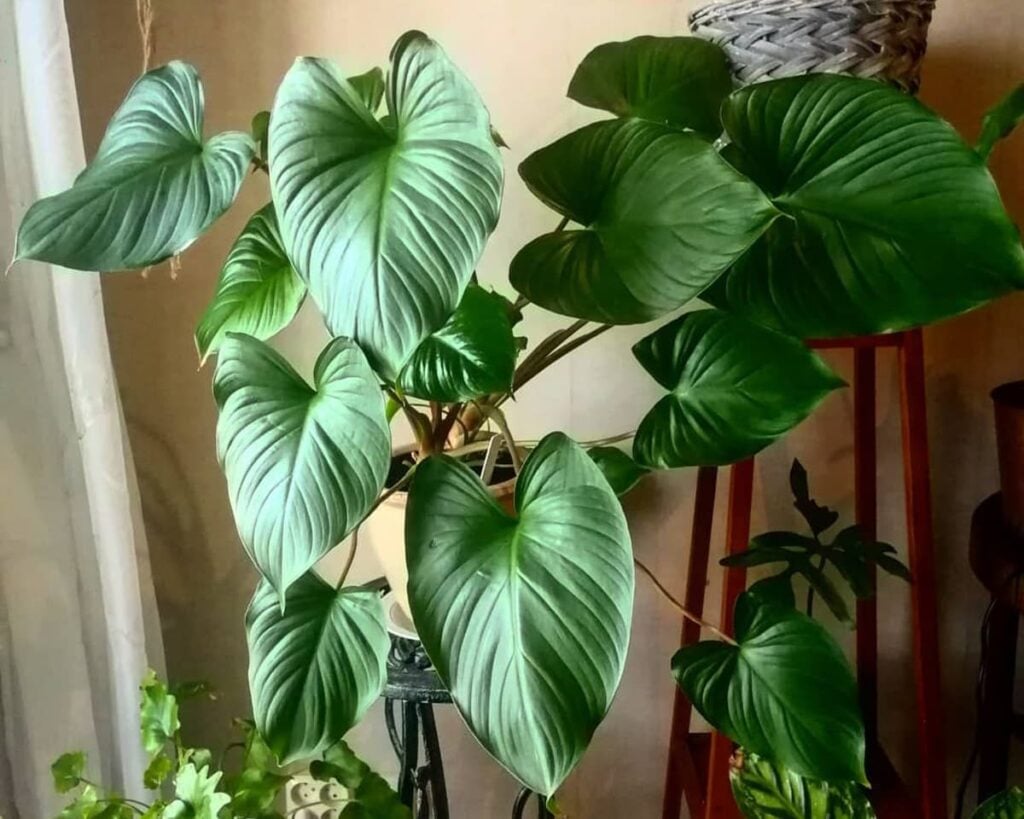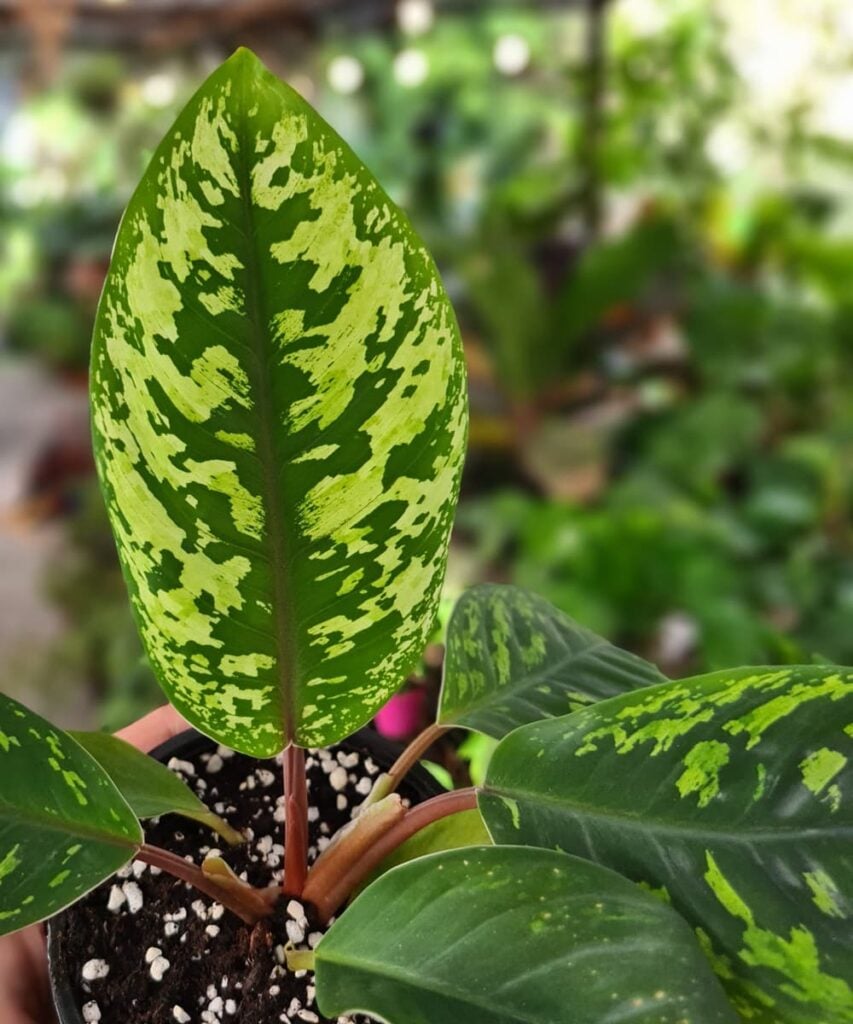Everything You Need to Know about Homalomena Care
Homalomena are tropical plants known for their large, waxy and glossy foliage. The foliage and stems run the gamut from deep greens to reds, burgundies, and copper tones. Appearing to be waxen, the leaves are of a heart or semi-heart shape speaking to the common names for Homalomena: “queen of hearts” or “shield plant”. Homalomena houseplants have attractive, but very few, finger-like blooms. Check out our Homalomena collection.

Homalomena Care
The main requirements for the tropical-in-origin Homalomena are a well-drained potting mix, warmth, humidity and indirect light. Providing these criteria are met, your plant should thrive for several years. Let’s discuss Homalomena care in details.
Light
Homalomena houseplants do well in medium to low light exposures but truly thrive in medium light conditions. An overabundance of sun can scorch the foliage, causing burnt spots on the leaves. It’ll still survive in low light conditions, but just be aware that it’ll slow the growth rate down considerably.
The key thing is to ensure they don’t have extended periods in direct sun or the leaves will become faded, yellow and scorched.
Soil
Homalomena has a preference for light, loamy, well-drained, fertile, acidic soils or mediums. Potting mixes that contain peat moss can help ensure water will prevent a build-up of moisture. Be sure that the pot the plant sits in also has good drainage holes.
Water
Homalomena care will also include a regular watering schedule. Homalomena plants do not like to be dry, nor do they like to be sitting in water. Saturate the soil and be sure to provide good drainage.
During the plant’s growth period, through the spring and summer, more moisture will be required. Ensuring the water temperature is lukewarm rather than cold can help your Homalomena in good health too.

Temperature and Humidity
Homalomenas like warmth and humidity. If they’re exposed to prolonged cold temperatures or draughts, their leaves will turn yellow, and they’ll eventually die. They thrive when temperatures are above 21° C.
If your home has a dry rather than humid heat, your plants leaves will appreciate regular spritzing, and you can also use a pebble tray. This can help prevent brown tips and keep the humidity levels up.
Fertilizer
During the summer, your Homalomena will appreciate being fed a couple of times a month with a slow-release, organic fertilizer. In the winter months, because there isn’t any active growth, you don’t need to worry about additional feeding.

Common Problems
- Symptom: Root rot
Cause: Over-watering/water logging. - Symptom: Droopy leaves
Cause: Dry soil. - Symptom: Yellow leaves
Cause: Over-watering. - Symptom: Wilted leaves
Cause: Under-watering/over-watering/exposure to direct sunlight.
Homalomena have rhizomatous roots, which means they can be propagating from cuttings of these rhizomes. The plants can also be divided once they’re well established. Lush, tidy, clumping plants, Homalomena houseplants are a relatively easy indoor plant to grow with lovely, sometimes exceptional, leaf shapes and colorations. Because of their ability to grow in low light conditions, it makes them a good choice for a house that doesn’t benefit from windows offering a lot of natural sunlight.
Homalomena care reference: TheSpruce
